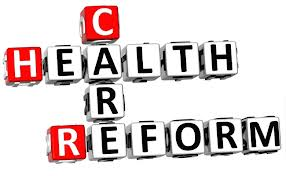 The national debate over the Affordable Care Act (ACA) has involved substantial discussion about what effects — if any — insurance coverage has on health and mortality.
The national debate over the Affordable Care Act (ACA) has involved substantial discussion about what effects — if any — insurance coverage has on health and mortality.
“We know far more now about the effects of health insurance than we did when the ACA was originally passed, due to many recent high-quality studies. The evidence we reviewed in this paper shows that coverage makes a major difference in people’s ability to live healthier and longer lives,” said Benjamin Sommers, associate professor of health policy and economics at Harvard Chan School, associate professor of medicine at Harvard Medical School, and lead author of the paper.
“…whether enrollees benefit from that coverage is not one of the unanswered questions. Insurance coverage increases access to care and improves a wide range of health outcomes. Arguing that health insurance coverage doesn’t improve health is simply inconsistent with the evidence.” – Benjamin D. Sommers, M.D., Ph.D., Atul A. Gawande, M.D., M.P.H., and Katherine Baicker, Ph.D. June 21, 2017DOI: 10.1056/NEJMsb1706645
The Harvard Chan researchers synthesized the most rigorous evidence from the past decade, drawing on findings from more than 40 papers, including major studies of their own.
The body of evidence showed that coverage expansions have produced significantly higher rates of being able to afford needed care, and having access to preventive services, primary care, chronic illness treatment, medications, and surgical care. In turn, these changes have led to a wide range of improvements in health. MedicalXpress.com synthesized four key points.:
- People who obtain health insurance coverage report significant improvement in their overall health, a generally consistent finding across studies of Medicaid expansion, private insurance expansion, Massachusetts health reform, and the ACA. The authors noted that research also shows that better self-reported health is associated with lower mortality rates.
- Insurance has major benefits for people with depression—one of the most common chronic conditions in the U.S.—including improved rates of diagnosis and treatment and reduced symptoms.
- Health insurance expansion find it saves lives, with the largest reductions occurring among deaths from conditions that are frequently treatable with adequate medical care, such as infections, heart disease, and cancer.
- Coverage expansions are relatively cost-effective compared to other policies affecting mortality, according to a recent economic analysis.
The article laid to rest the benefits of coverage, but now the real challenge centers on cost containment and efficiencies. Vera Gruessner, on December 23, 2016, of healthpayerintelligence.com wrote a great piece on American Health Policy Institute’s released a report describing its work with VBID (Medicare Advantage Value-Based Insurance Design Model) Health. Payers reduce wasteful spending in a number of common sense ways.
The American Health Policy Institute (AHPI) seeks to address member issues around the cost of healthcare in the United States, and specifically how large employers can maximize the value of their healthcare purchasing dollars.
The report identified, “Administrative Efficiency” as a key component to target. “A significant portion of wasteful spending is the result of operational inefficiencies, excessive pricing, fraud and abuse, and other factors. We recommend that large employers take advantage of their combined purchasing power and economies of scale. Where possible, we would encourage developing shared services, group purchasing (e.g., TPA, Centers of Excellence), adoption of best practices, and other benefits of scale.”
“The American Health Policy Institute released a report describing its work with VBID (Medicare Advantage Value-Based Insurance Design Model) Health that found unnecessary and wasteful spending account for 20 percent of total funding or about $2 billion among 35 large employers. Prior studies have found that wasteful spending could be responsible for as much as 30 or 40 percent of total healthcare costs.
